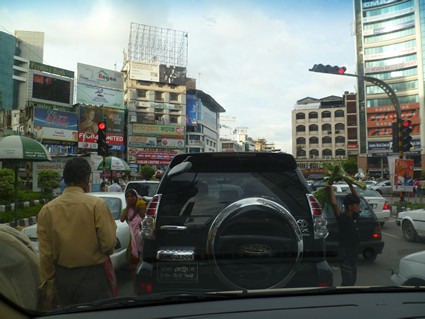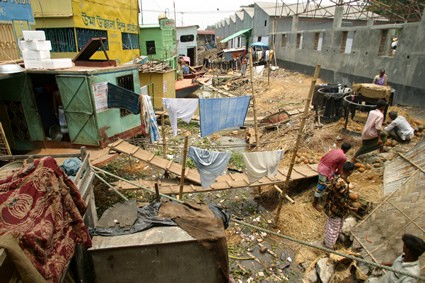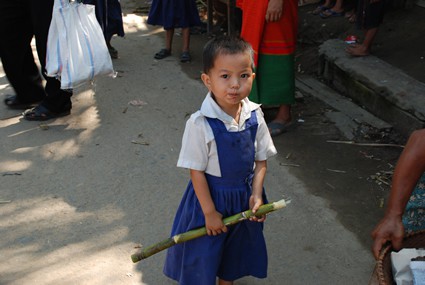San People
The San People are direct descendants of Stone Age Foragers, indigenous inhabitants of southern Africa and East Africa, who continued to use stone arrowheads and implements into the 19th Century. Much of the prehistoric art in Namibia is attributed to the San People, although they no longer paint or engrave images on rock.
San nomads once roamed the land in small groups. They kept ancestral territories where they found shelter in caves or under rock overhangs near a of source of water, or alternatively they made make shift shelters from bits and pieces of vegetation. Over time the San were driven from their hunting grounds, until the current day where the only land left for the San people to practice their culture and beliefs is in the Northern Kalahari.
The San People are direct descendants of Stone Age Foragers, indigenous inhabitants of southern Africa and East Africa, who continued to use stone arrowheads and implements into the 19th Century. Much of the prehistoric art in Namibia is attributed to the San People, although they no longer paint or engrave images on rock.
San nomads once roamed the land in small groups. They kept ancestral territories where they found shelter in caves or under rock overhangs near a of source of water, or alternatively they made make shift shelters from bits and pieces of vegetation. Over time the San were driven from their hunting grounds, until the current day where the only land left for the San people to practice their culture and beliefs is in the Northern Kalahari.
The Nama
The Nama are pastoralists. They look a lot like San, just lighter in color and generally somewhat taller. The two tribes also speak similar tongues, widely considered to be part of the same phylum or group of language families, full of clicked consonants and slurred vowels.
The Nama are fighters and in precolonial times, the Nama intermittently fought the Herero for control of grazing grounds in central Namibia. The feud dragged on for a good part of the 19th Century. Subsequently the Nama twice rose in armed rebellion against German Rule. It was during the second uprising in 1904 – 07 that a mass genocide occurred and over half the Nama people perished. The greatest chief was among the dead. As punishment for the revolt the colonial government confiscated their land.
The Damara
The Damara People share the same language with the Nama People but little else. They are taller, sturdier and darker skinned. Their culture and beliefs are also markedly different. It is believed their ancestors were ‘pure’ or true blacks who accompanied the Khoisan people into Namibia. The majority of Damara people no longer live in Damaraland and the Skeleton Cost. They are found in most walks of life in modern Namibia. The first prime minister of Namibia and his immediate successor were both Damara.
The Ovambo
The Ovambo people established a number of kingdoms on the floodplains north of Etosha where the majority still live. The population is the densest in the country, about five times the national average, mainly engaged in subsistence agriculture.
The Ovambo are strong supporters of the ruling party and they were at the forefront of the struggle for independence from South Africa. The founding President of Namibia, Sam Nujoma, was born and raised in an Ovambo villages. He retired in 2005 after a period of three terms in office, his successor as President, Hifikepunye Pohamba, comes from a similar cultural background.
The Herero
The Herero are arguably the most culturally recognizable in Namibia. The Herero women are often seen in ankle length dresses with high neck lines, tight bodices and long puffed sleeves. Adapted from European fashion in the Victorian period, the style of the dress is now regarded as a cultural tradition to them. It is worn with a cloth headdress that is pointed on either side in a shape meant to symbolist cattle horns. Like the Masai in East Africa they were nomadic herders, with cattle at the center of their culture. They regarded their cattle as ancestral legacy which had been husbanded for future generations. Cattle were only slaughtered on ceremonial occasions. Historically the Herero were persistently cheated out of cattle and land, and they rose in rebellion against the colonialists in 1904. In the war that followed the Herero people were massacred. They fell to enemy fire both on and off the battlefield or died from thirst as they fled to the Kalahari, to compound the carnage their waterholes were poisoned. In modern times Herero activists like Chief Hosea Kutako (after whom the international airport in Windhoek is named) figured prominently in the quest for support from the international community for Namibian independence.
The Nama are pastoralists. They look a lot like San, just lighter in color and generally somewhat taller. The two tribes also speak similar tongues, widely considered to be part of the same phylum or group of language families, full of clicked consonants and slurred vowels.
The Nama are fighters and in precolonial times, the Nama intermittently fought the Herero for control of grazing grounds in central Namibia. The feud dragged on for a good part of the 19th Century. Subsequently the Nama twice rose in armed rebellion against German Rule. It was during the second uprising in 1904 – 07 that a mass genocide occurred and over half the Nama people perished. The greatest chief was among the dead. As punishment for the revolt the colonial government confiscated their land.
The Damara
The Damara People share the same language with the Nama People but little else. They are taller, sturdier and darker skinned. Their culture and beliefs are also markedly different. It is believed their ancestors were ‘pure’ or true blacks who accompanied the Khoisan people into Namibia. The majority of Damara people no longer live in Damaraland and the Skeleton Cost. They are found in most walks of life in modern Namibia. The first prime minister of Namibia and his immediate successor were both Damara.
The Ovambo
The Ovambo people established a number of kingdoms on the floodplains north of Etosha where the majority still live. The population is the densest in the country, about five times the national average, mainly engaged in subsistence agriculture.
The Ovambo are strong supporters of the ruling party and they were at the forefront of the struggle for independence from South Africa. The founding President of Namibia, Sam Nujoma, was born and raised in an Ovambo villages. He retired in 2005 after a period of three terms in office, his successor as President, Hifikepunye Pohamba, comes from a similar cultural background.
The Herero
The Herero are arguably the most culturally recognizable in Namibia. The Herero women are often seen in ankle length dresses with high neck lines, tight bodices and long puffed sleeves. Adapted from European fashion in the Victorian period, the style of the dress is now regarded as a cultural tradition to them. It is worn with a cloth headdress that is pointed on either side in a shape meant to symbolist cattle horns. Like the Masai in East Africa they were nomadic herders, with cattle at the center of their culture. They regarded their cattle as ancestral legacy which had been husbanded for future generations. Cattle were only slaughtered on ceremonial occasions. Historically the Herero were persistently cheated out of cattle and land, and they rose in rebellion against the colonialists in 1904. In the war that followed the Herero people were massacred. They fell to enemy fire both on and off the battlefield or died from thirst as they fled to the Kalahari, to compound the carnage their waterholes were poisoned. In modern times Herero activists like Chief Hosea Kutako (after whom the international airport in Windhoek is named) figured prominently in the quest for support from the international community for Namibian independence.



























